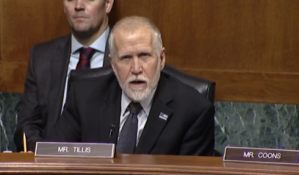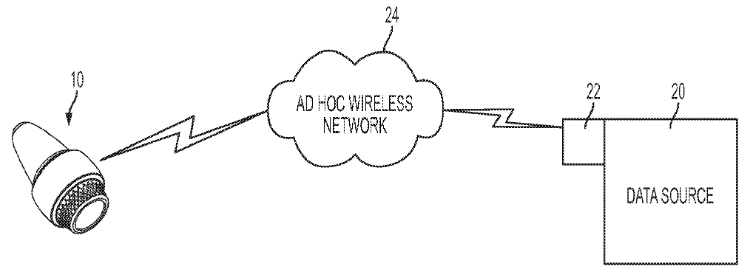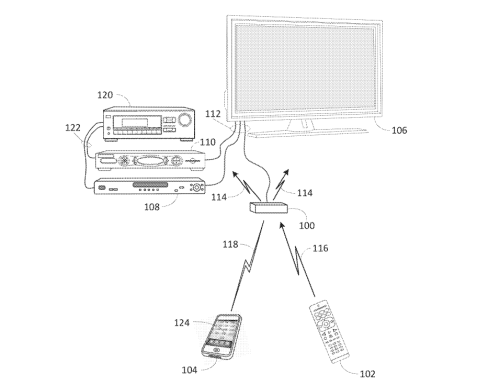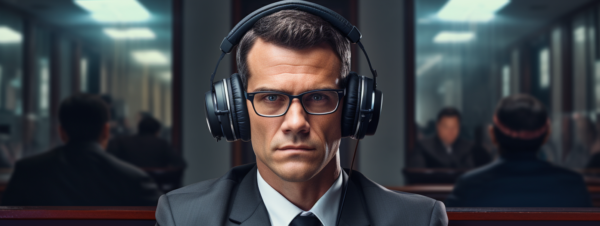Search Results for: wireless
Patent Office Issues Updated “Interim Guidance” on Patent Subject Matter Eligibility
Industry Responds to White House Calls for Prior Art, Examiner Training
Florist-Inventor Stuck With Admissions Made During Deposition and Loses on Summary Judgment
Patent Agent/Attorney (5G and wireless standards expert) – Law Firm – Remote
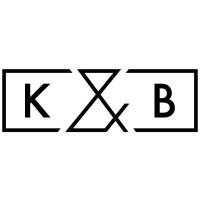 Kubota & Basol LLP is looking for patent attorneys or agents who are able to make an immediate and significant contribution to a new and growing 5G standards practice. The position requires registration with the USPTO and a minimum of 3 years of full-time experience drafting and prosecuting patent applications, in the role of outside counsel, directly associated with 4G, 5G, and 6G technical submissions to the 3GPP Communication Standards Organization. Also required is experience preparing claim charts that map claims to the 3GPP Communication Standards.
Kubota & Basol LLP is looking for patent attorneys or agents who are able to make an immediate and significant contribution to a new and growing 5G standards practice. The position requires registration with the USPTO and a minimum of 3 years of full-time experience drafting and prosecuting patent applications, in the role of outside counsel, directly associated with 4G, 5G, and 6G technical submissions to the 3GPP Communication Standards Organization. Also required is experience preparing claim charts that map claims to the 3GPP Communication Standards.
Compensation will be based on productivity.
Our offices are located in Los Angeles and Northern Virginia, but remote working arrangements with visits to the Los Angeles and/or Northern Virginia offices are completely acceptable. We are a growing law firm--get in early at a firm where you can shape the firm, our culture, and your own practice and development!
By joining, you will also have the opportunity to work with one of the most well-known and innovative companies in the world! Between all of our clients, we prepare and prosecute patents in many exciting and cutting-edge technology areas, including AR/VR, machine learning, and others. Perform top-notch patent prosecution for cutting-edge clients in a collegial and relaxed atmosphere!
Apply online at:
https://ats.rippling.com/kubota-basol-llp-job-board/jobs
Please include a resume with your submission.
Additional Info
Employer Type: Law Firm
Job Location: Remote
Senior Ip Counsel, Wireless/Video Compression – Corporation – Northern VA
 Ofinno is a leading research and development lab for 5G/6G, Next-Gen Wi-Fi, and video compression technologies. Home to some of the world’s most prolific inventors, Ofinno helps companies stay ahead of the technological curve by outsourcing their R&D from ideation to delivery.
Ofinno is a leading research and development lab for 5G/6G, Next-Gen Wi-Fi, and video compression technologies. Home to some of the world’s most prolific inventors, Ofinno helps companies stay ahead of the technological curve by outsourcing their R&D from ideation to delivery.
We are growing rapidly, and we need experienced IP counsel to keep our enterprise at the leading edge of innovation. Our legal team works shoulder-to-shoulder with the technology team, from the conception of a new idea until the moment the patent is received. The end result is an industry-recognized portfolio, with global reach, at the core of next-generation tech.
Cross-training is what separates Ofinno from other R&D labs. We challenge our IP counsel to master the technical concepts underlying our inventors’ ideas. At the same time, our IP counsel are expected to educate our inventors on the legal aspects of IP. Ofinno’s culture of mutual learning and collaboration is unique among R&D labs, and absolutely can not be duplicated at a law firm.
Job Description
What you’ll be doing:
You will have responsibility for all IP needs of the business related to Ofinno’s technical team, including working closely with inventors to evaluate, draft, file, and prosecute patent applications in the United States and other jurisdictions.
Your responsibilities include:
- Reviewing and drafting patent applications, including specification, figures, and claims
- Making filing decisions and formulating prosecution strategies
- Interviewing Examiners and responding to Office Actions
- Coordinating prosecution strategies across multiple global jurisdictions and instructing foreign associates
- Helping to coordinate, evaluate, and manage Ofinno’s 5G/6G, Next-Gen Wi-Fi, or Video Compression patent portfolio
Searching prior art for relevant subject matter
Qualifications
Who you are:
- Licensed to practice before the USPTO
- Experience with 5G, Next-Gen Wi-Fi, or Video Compression technology
- Five or more years of experience drafting and prosecuting patents, managing portfolios, performing patent analysis, and developing patent strategies
- Degree in Electrical Engineering or Computer Science
- Willing and able to report to our office in Reston, Virginia, at least four days per week
Additional information:
Our people are our business, and it is our job to take care of you. We know you have to see it to believe it, but here are some of the perks you can count on:
- Competitive salaries within the range of $175k - $240k for attorneys ($125k - $170k for agents), with regular opportunities for salary increase, and additional compensation based on company performance and valuation.
- 401(K) matching -- We help you plan and save for retirement with a 401(K) matching program that’s available on day one.
- Free healthcare plans-- Ofinno covers full premiums for you are your family on select healthcare plans, including employer HSA contributions if applicable.
- Free Food -- Our kitchen is always fully stocked, including lunch, protein bars, fruit, sodas, coffee and tea.
- Unlimited Paid Time Off -- Our lives are enriched by family time, vacations and personal time, so we offer unlimited paid time off and sick leave.
- On-campus gym -- Unwind, reduce stress and feel great – even when you’re at work.
- Other benefits, too long to list -- Please discuss with our great People Ops team about additional benefits offered.
- All your information will be kept confidential according to EEO guidelines
To join Ofinno, please submit a cover letter and some writing samples to careers@ofinno.com. The writing samples preferably include: (a) a patent application that you have written in the area of 5G/6G, Next-Gen Wi-Fi, or video compression; (b) at least one response to a USPTO or EPO Office Action. For the Office Action Response, we are particularly interested in the persuasiveness of your arguments regarding novelty and non-obviousness. Ideally, the Office Action Response includes substantive arguments with fact-based analysis of the cited art (as opposed to 101 arguments or arguments in support of newly-added features).
Additional Info
Employer Type: Small Corporation
Job Location: Northern VA
The Fintiv Pendulum Swings Again: More Discretionary Denials Coming Soon
Blurring the Line Between Law and Fact in Patent Eligibility
The RESTORE Patent Rights Act: One Little Sentence that Could Change Everything
The Senate Judiciary Committee’s Subcommittee on Intellectual Property recently held a new hearing focusing on the RESTORE Patent Rights Act, a deceptively simple one-sentence bill that could dramatically reshape patent enforcement in the United States. The hearing highlighted the stark divide between those who believe stronger injunctive relief is needed to protect patent rights and those who warn that presumptive injunctions could harm innovation.
At its core, the RESTORE Act would establish a rebuttable presumption that courts should grant permanent injunctions when patent infringement is found. The key language is as follows:
If . . . the court enters a final judgment finding infringement of a right secured by patent, the patent owner shall be entitled to a rebuttable presumption that the court should grant a permanent injunction with respect to that infringing conduct.
This would partially reverse the Supreme Court’s 15-year-old decision in eBay Inc. v. MercExchange, L.L.C., 547 U.S. 388 (2006) which eliminated the near-automatic granting of injunctions in patent cases and instead required courts to apply a four-factor test considering irreparable harm, adequacy of monetary damages, balance of hardships, and the public interest. Under the proposal, the four factors would (I presume) continue to apply, but with the burden shifted to adjudged infringers to show that they do not support injunctive relief. In my mind, the bill also highlights an aspect of eBay that is not much discussed. The Supreme Court said nothing explicit about whether a presumption of irreparable harm persists — that elimination of even a presumption of irreparable harm came from the Federal Circuit most notably in Robert Bosch LLC v. Pylon Mfg. Corp., 659 F.3d 1142 (Fed. Cir. 2011). In Bosch, the Federal Circuit took the additional step of interpreting eBay to eliminate the presumption of irreparable harm. Overruling Smith Int’l, Inc. v. Hughes Tool Co., 718 F.2d 1573 (Fed. Cir. 1983) (“where validity and continuing infringement have been clearly established, immediate irreparable harm is presumed.”).
The December 18, 2024 hearing was led by Senators Coons and Tillis and included four witnesses.
Supreme Court Patent Cases – November 2024
From Chief Judge Markey’s Promise to Rule 36: We Do Not Just Render One-Worded Decisions
by Dennis Crouch
The Supreme Court currently has before it a unique opportunity to address a longstanding problem with the Federal Circuit’s practice of issuing no-opinion summary affirmances in patent cases. The recently filed ParkerVision petition presents a compelling argument that the Federal Circuit’s heavy reliance on Local Rule 36 judgments violates 35 U.S.C. § 144’s requirement that the court “shall issue… its mandate and opinion” when deciding appeals from the Patent Office. This violation has become particularly acute given the surge in appeals from Patent Trial and Appeal Board (PTAB) decisions in recent years. ParkerVision vs. TCL Indus., 24-518. While appellate opinions serve fundamental interests of human dignity and the rule of law — interests that take on special significance as here when no other Article III court has addressed the dispute — this case presents an even clearer problem because Congress has specifically mandated through Section 144 that the Federal Circuit ‘shall issue’ an opinion in appeals from USPTO decisions.
The ParkerVision petition arises from the Federal Circuit’s summary affirmance of PTAB decisions that invalidated the patentee’s claims related to wireless communication technology. After TCL and LG Electronics successfully challenged the patents via inter partes review (IPR), ParkerVision appealed to the Federal Circuit raising procedural questions about whether the PTAB improperly relied on arguments that had been waived. Rather than addressing the merits of the arguments, the Federal Circuit instead disposed of both appeals without any opinion and rather simply an “AFFIRMED” judgments under Rule 36, providing no explanation for its decisions.
The question presented thus asks:
Whether 35 U.S.C. § 144, which requires the Federal Circuit to issue ‘opinion[s]’ in PTAB appeals, is a reason-giving directive that prohibits the Federal Circuit’s practice, under Federal Circuit Rule 36(a), of summarily affirming PTAB decisions without issuing opinions.
ParkerVision vs. TCL Indus., 24-518 (petition for writ of certiorari).
More reading:
- Dennis Crouch, Wrongly Affirmed Without Opinion, 52 Wake Forest L. Rev. 561 (2017).
- Dennis Crouch, Patent Exceptionalism and Procedural Silence: A New Challenge to Federal Circuit Practice, Patently-O (October 2024) (discussing the Island IP petition).
- Paul R. Gugliuzza and Mark A. Lemley, Can a Court Change the Law by Saying Nothing?, 71 Vanderbilt Law Review 765 (2018)
-
Jason Rantanen, Missing Decisions and the United States Court of Appeals for the Federal Circuit, 170 U. Pa. L. Rev. Online 73 (2022)
The Federal Circuit’s Antisuit Injunction Decision in Ericsson v. Lenovo has Broader Implications for Global SEP Litigation
I previously wrote about the Federal Circuit’s FRAND international injunction decision in Ericsson v. Lenovo, but also invited Prof. Jorge Contreras to provide his insight. Contreras is one of the world’s leading experts on FRAND litigation and standards-essential patent licensing. His analysis of the Federal Circuit’s decision in Ericsson particularly highlights the court’s new limits on injunctive relief for FRAND violators and suggests renewed U.S. court engagement in global rate-setting disputes. — Dennis Crouch
= = =
Guest Post by Professor Jorge L. Contreras
On October 24, 2024, the Court of Appeals for the Federal Circuit (No. 24-1515, 2024 U.S. App. LEXIS 26863) cleared the way for Lenovo to seek an antisuit injunction against Ericsson in the parties’ global FRAND litigation. In doing so, it established important precedent for cases involving standards-essential patents.
Background
The case stems from the dispute between Ericsson and Lenovo over licenses to their respective portfolios of patents essential to the 5G wireless telecommunications standards (standards-essential patents or SEPs). Under the applicable rules of the European Telecommunications Standards Institute (ETSI), each of the parties committed to grant licenses under its SEPs to manufacturers of standardized products on terms that are fair, reasonable and nondiscriminatory (FRAND). As the parties, after years of negotiation, were unable to agree on the FRAND royalties for a cross-license of these SEPs, they each initiated litigation in various jurisdictions including the United Kingdom, Brazil, Colombia, the US International Trade Commission and the U.S. District Court for the Eastern District of North Carolina (EDNC). In the EDNC, each party accused the other of infringing its 5G SEPs and breaching its contractual FRAND obligations to ETSI.
In late 2023, Ericsson obtained injunctions against Lenovo’s sale of 5G-enabled phones in Brazil and Colombia. In response, Lenovo petitioned the EDNC for an antisuit injunction (ASI) (technically, a temporary restraining order), which would have barred Ericsson from enforcing its Brazilian and Colombian injunctions against Lenovo until the resolution of the FRAND dispute in the U.S. court. In February 2024, the EDNC denied Lenovo’s motion for an ASI (No. 5:23-CV-00569-BO, 2024 U.S. Dist. LEXIS 26060, 2024 WL 645319). Lenovo appealed to the Federal Circuit, which reversed and remanded. (more…)

